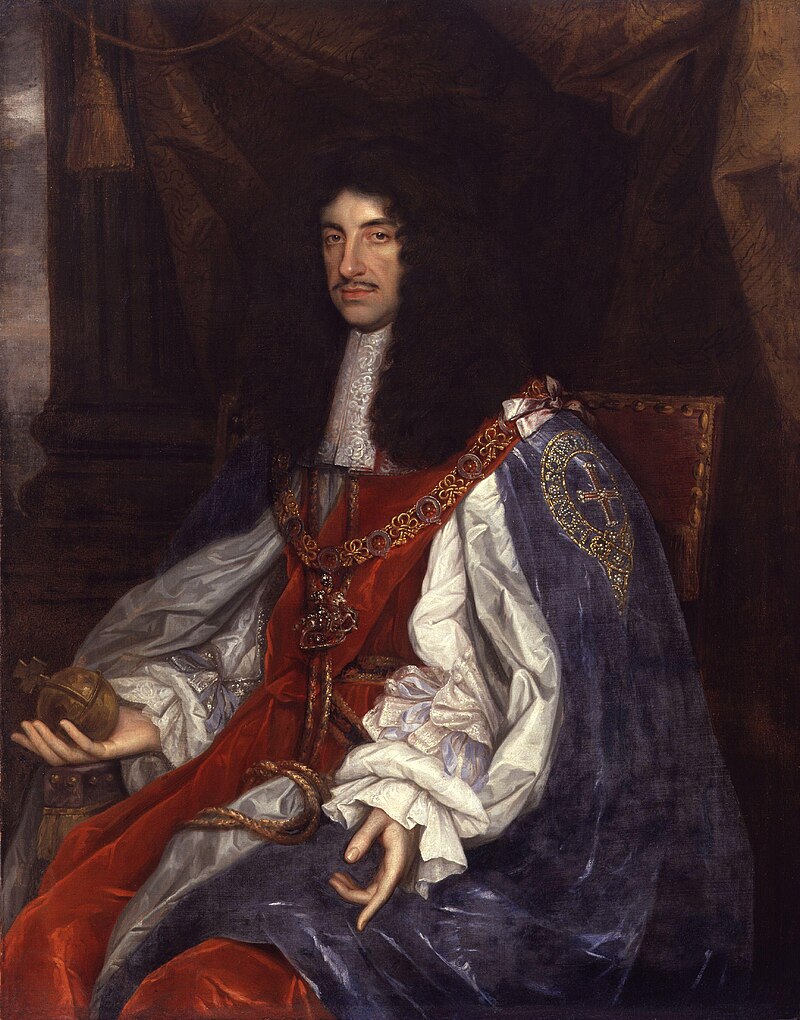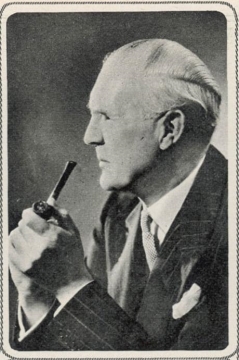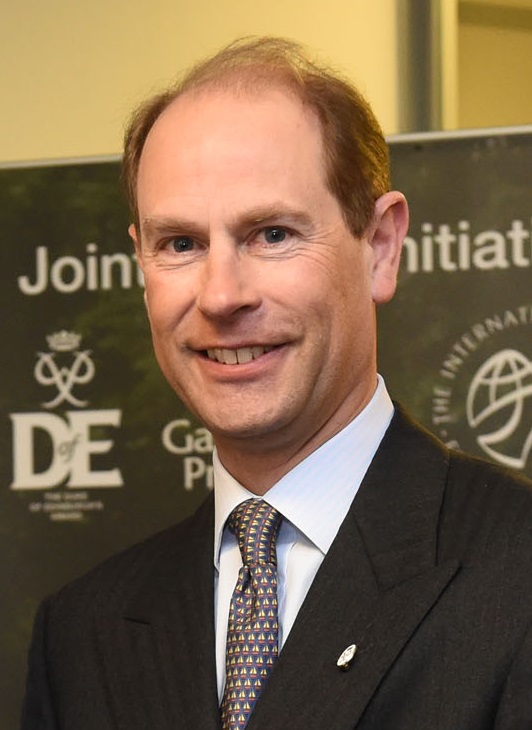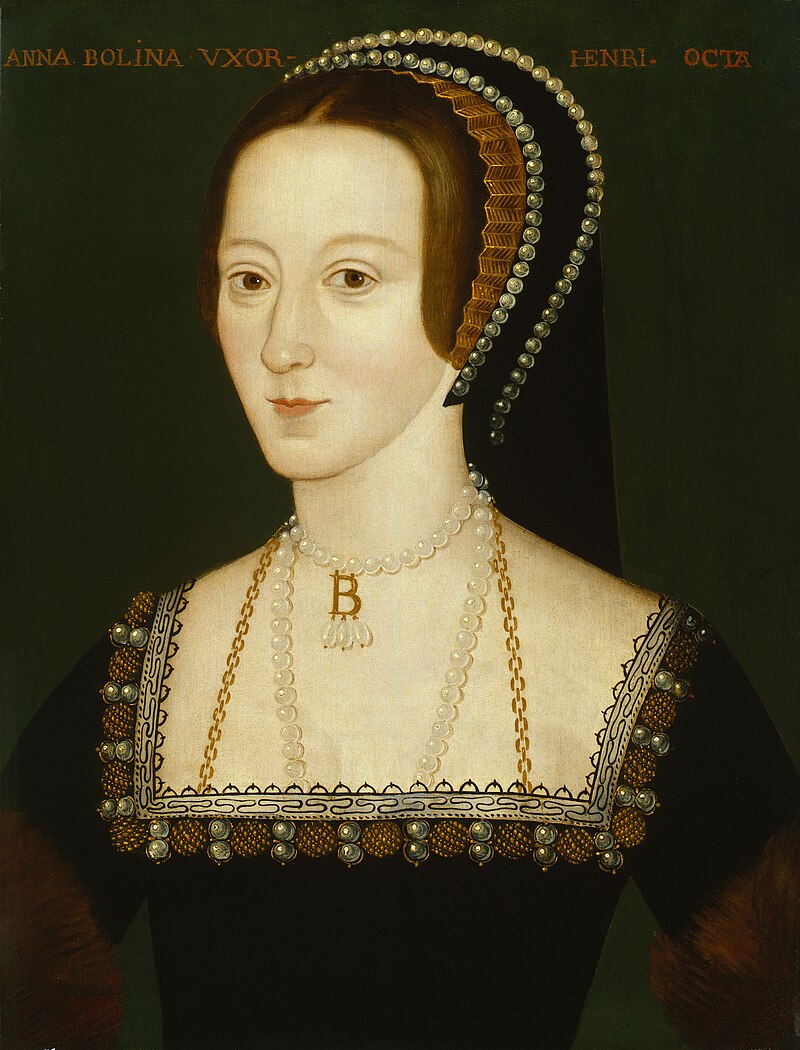by Susan Flantzer
© Unofficial Royalty 2024

Charles Beauclerk, 1st Duke of St. Albans; Credit – https://commons.wikimedia.org/w/index.php?curid=7211580
Despite fathering many illegitimate children with his mistresses, King Charles II of England had no children with his wife Catherine of Braganza. Charles II is an ancestor through his mistresses of many British aristocrats and of several women who married into the British Royal Family. Lucy Walter and Charles II are ancestors of Sarah, Duchess of York and Princess Alice, Duchess of Gloucester. Barbara Palmer, 1st Duchess of Cleveland and Charles II are ancestors of Diana, Princess of Wales and Sarah, Duchess of York. Louise Renée de Penancoet de Kérouaille, Duchess of Portsmouth and Charles II are ancestors of Diana, Princess of Wales, Queen Camilla, and Sarah, Duchess of York.
Charles Beauclerk, 1st Duke of St. Albans was born on May 8, 1670, at his mother’s house in Lincoln’s Inn Fields in London, England, the illegitimate son of King Charles II of England and his mistress Nell Gwyn. Charles II acknowledged Nell’s son right away.
The surname Beauclerk derives from King Henry I of England, who reigned 1100 – 1135. King Henry I received a good education, learning to read and write in Latin and studying English law. He also studied English, which was unusual for the time. As a younger son, his destiny probably was to enter the Church. He earned the nickname Beauclerc, Anglo-Norman for fine scholar.

Charles’ mother Nell Gwyn; By Simon Pietersz Verelst – https://www.apollo-magazine.com/highlights-of-masterpiece-london/, Public Domain, https://commons.wikimedia.org/w/index.php?curid=108376921
Charles’ mother Nell Gwyn has uncertain beginnings. Generally, her birth is given as February 2, 1650. Nell’s father was thought to be Thomas Gwyn, an army captain who died or disappeared. Nell’s mother was born Helena Smith, known as Madam Gwyn, in the civil parish of St Martin-in-the-Fields in London, England, and lived there all her life. Nell’s mother worked as a tapwoman at the Rose Tavern on Russell Street and it can be assumed that she also worked as a prostitute and that Nell probably worked as a child prostitute. Nell and her older sister Rose worked as orange girls selling fruit and sweetmeats to the patrons of a new playhouse, the Theatre in Bridges Street, which was later rebuilt and renamed the Theatre Royal, Drury Lane. The orange-girls were exposed to aspects of theater life and London’s higher society. The actors at the theater were the King’s Company and King Charles II frequently attended performances.
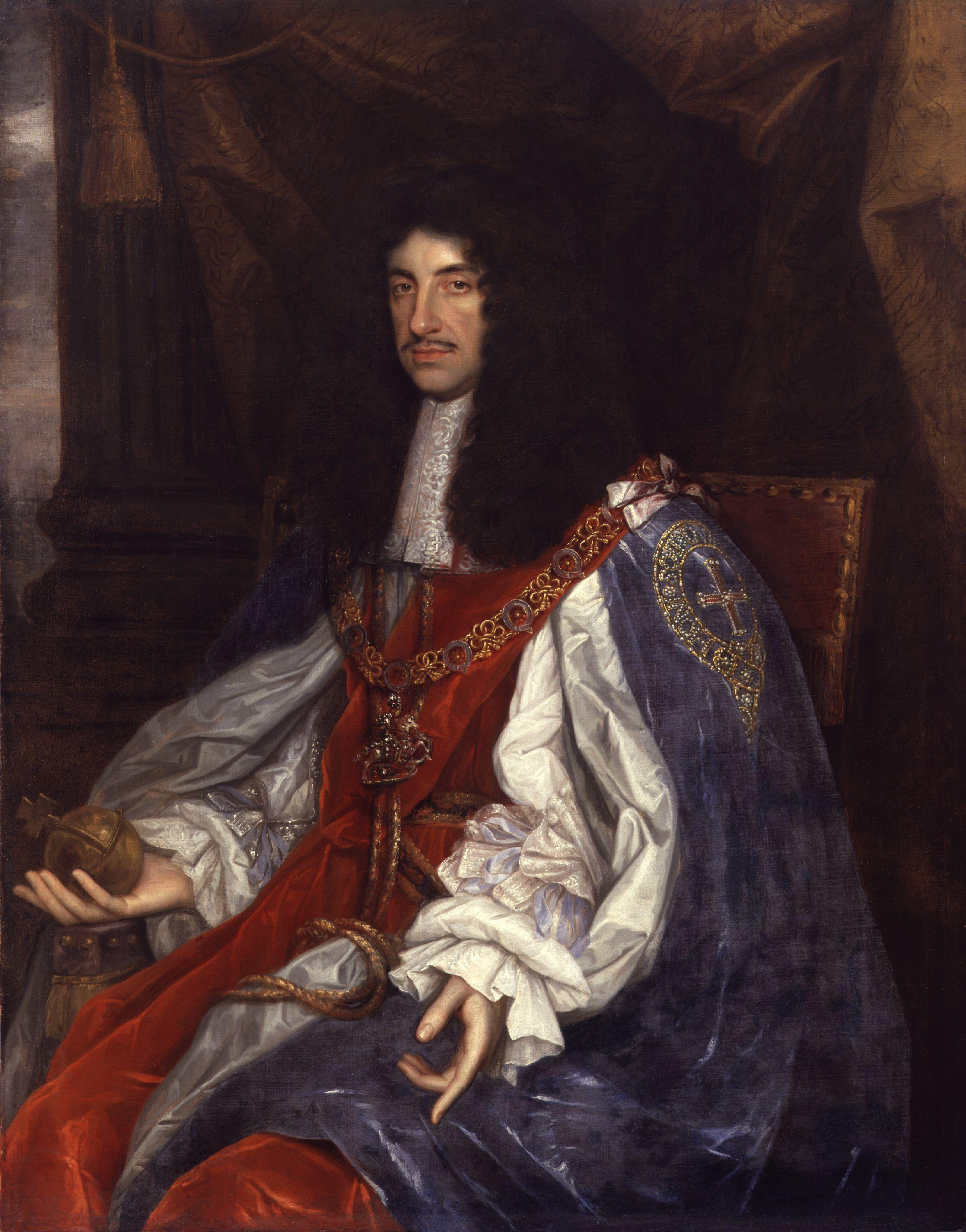
King Charles II of England; Credit – Wikipedia
Less than a year after becoming an orange girl, fourteen-year-old Nell became an actress with the King’s Company. Nell could not read or write and had to learn her lines by having them read to her. The affair between Nell and King Charles II began in April 1668 when Nell was attending a performance at Lincoln’s Inn Fields Theater. Charles II was in the next box and was more interested in flirting with Nell than watching the play. Charles II invited Nell and her escort to supper, along with his brother the Duke of York (the future King James II). After supper, so the story goes, Charles II discovered that he had no money on him and neither did his brother, resulting in Nell having to cover the cost of the supper. “Od’s fish!” she exclaimed, in imitation of Charles II’s manner of speaking, “but this is the poorest company I ever was in!”

Charles holding a coronet – he was already Earl of Burford (on the right) and James (on the left), the two sons of King Charles II of England and Nell Gwyn, in a 1679 engraving; Credit – Wikipedia
Besides Charles Beauclerk, 1st Duke of St. Albans, Nell had one other son with King Charles II:
- Lord James Beauclerk (1671 – 1680), died in childhood
In 1676, King Charles II created six-year-old Charles Earl of Burford and Baron Heddington. In 1684, Charles was created 1st Duke of St. Albans. Since then, all the Dukes of St. Albans have been his descendants. King Charles II also granted his son an allowance of £1,000 a year and the offices of Chief Ranger of Enfield Chace and Master of the Hawks. Charles served as Colonel in the Regiment of Horse and fought with Leopold I, Holy Roman Emperor at the Siege of Belgrade in 1688. When Charles’ 36-year-old mother Nell Gwyn died in 1687, she left her estate including Burford House, near Windsor Castle to her son Charles.
In 1688, Charles supported his first cousin William III, Prince of Orange (also William III, Prince of Orange) in overthrowing their uncle King James II in the Glorious Revolution of 1688, resulting in his first cousins, husband and wife William III, Prince of Orange and Princess Mary of England, the elder of the two daughters of King James II, reigning England jointly as King William III and Queen Mary II. Charles held several important appointments under King William III and Queen Mary II and under King George I including Captain of the Band of Gentlemen Pensioners, Lord of the Bedchamber, and Lord Lieutenant of Berkshire.

Charles’ wife Lady Diana de Vere By Godfrey Kneller – https://www.royalcollection.org.uk/collection/404722/diana-de-vere-duchess-of-st-albans-d-1742, Public Domain, https://commons.wikimedia.org/w/index.php?curid=73191575
On April 17, 1694, Charles married Lady Diana de Vere, daughter of Aubrey de Vere, 20th Earl of Oxford and one of the Hampton Court Beauties, a series of eight portraits by Sir Godfrey Kneller (one of the portraits is above), commissioned by Queen Mary II of England, depicting the most glamorous ladies from the court of William III and Mary III. From 1714 to 1717, Diana was Mistress of the Robes to Caroline of Ansbach, Princess of Wales, the wife of the future King George II of Great Britain.
Charles and Diana had twelve children:
- Charles Beauclerk, 2nd Duke of St Albans (1696 – 1751), married Lucy Werden, had one son and one daughter
- Lady Diana Beauclerk (born c. 1697)
- Lord William Beauclerk (1698 – 1732), married Charlotte Werden, had two sons and two daughters
- Admiral Vere Beauclerk, 1st Baron Vere of Hanworth (1699 – 1781), married Mary Chambers, had four sons and two daughters
- Colonel Lord Henry Beauclerk (1701 – 1761), unmarried
- Lord Sidney Beauclerk (1703 – 1744), married Mary Norris, had one son
- Lieutenant-General Lord George Beauclerk (1704 – 1768), married Margaret Bainbridge, no children
- Lord Seymour Beauclerk (1708 – 1709), died in infancy
- Lord James Beauclerk, Bishop of Hereford (circa 1709 – 1787), unmarried
- Lord Aubrey Beauclerk (1711 – 1740), Captain in the Royal Navy, and died at the Battle of Cartagena de Indias, unmarried
- Lady Mary Beauclerk (1710 – 1795), married Michael Archibald McDonald, had one son
- Lady Anne Beauclerk (1716 – ?)

A view of the Chapel of St. John the Evangelist at Westminster Abbey; Credit – Wikipedia
Charles Beauclerk, 1st Duke of St. Albans died on May 10, 1726, aged 56, in Bath, England. He was buried at Westminster Abbey in the Chapel of St. John the Evangelist but he has no monument or marker. His wife Diana survived him by sixteen years, dying, aged 63, on January 15, 1742, at Windsor Castle in Windsor, England, and was buried in St. George’s Chapel, Windsor Castle in Windsor, England.
This article is the intellectual property of Unofficial Royalty and is NOT TO BE COPIED, EDITED, OR POSTED IN ANY FORM ON ANOTHER WEBSITE under any circumstances. It is permissible to use a link that directs to Unofficial Royalty.
Works Cited
- Beauclerk-Dewar, Peter & Powell, Roger. (2006). Right Royal Bastards – The Fruits of Passion. Burke’s Peerage & Gentry LLC.
- Beauclerk Family. Westminster Abbey. (n.d.). https://www.westminster-abbey.org/abbey-commemorations/commemorations/beauclerk-family
- Charles Beauclerk, 1st Duke of St. Albans. geni_family_tree. (2022). https://www.geni.com/people/Charles-Beauclerk-1st-Duke-of-St-Albans/6000000000769939369
- Charles Beauclerk, 1st Duke of St Albans. (2024). In Wikipedia. https://en.wikipedia.org/wiki/Charles_Beauclerk,_1st_Duke_of_St_Albans
- Flantzer, Susan. (2020). Nell Gwyn, Mistress of King Charles II of England. Unofficial Royalty. https://www.unofficialroyalty.com/nell-gwyn-mistress-of-king-charles-ii-of-england/
- Flantzer, Susan. (2016). King Charles II of England. Unofficial Royalty. https://www.unofficialroyalty.com/king-charles-ii-of-england/
- Fraser, Antonia. (2002). King Charles II. Phoenix.
- Weir, Alison. (2008). Britain’s Royal Families – The Complete Genealogy. Vintage Books.


